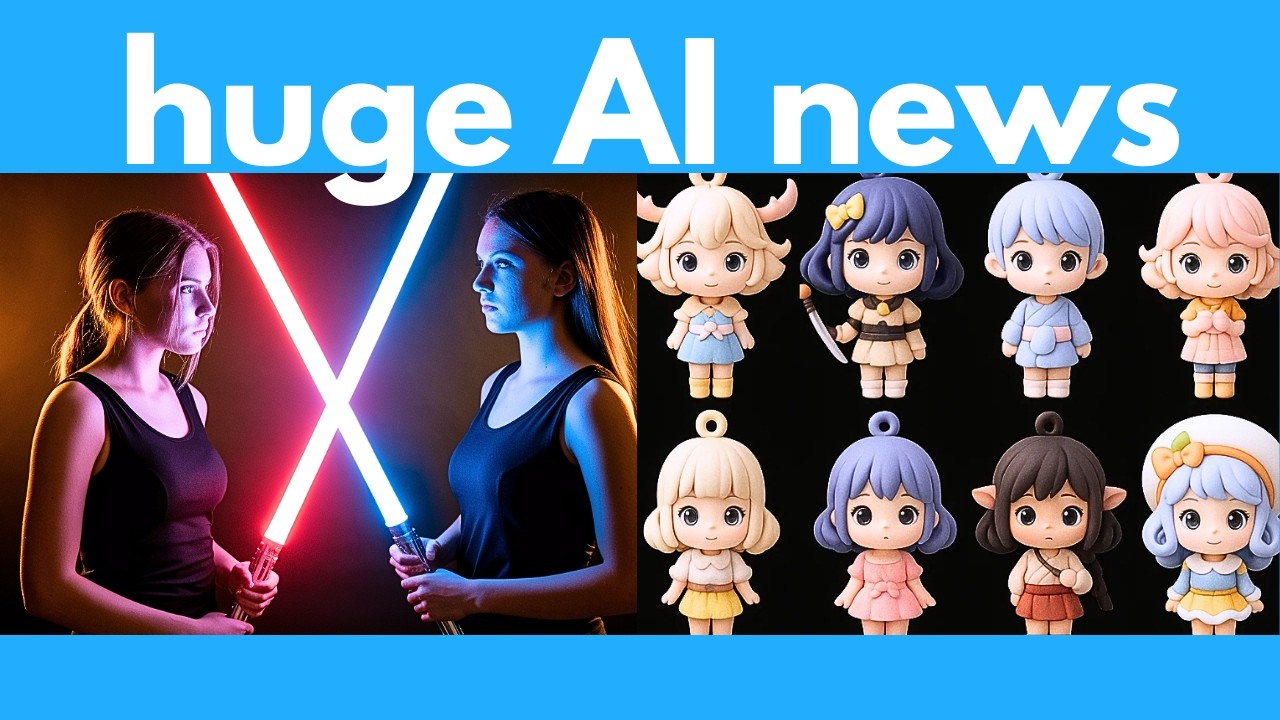The video highlights recent breakthroughs in AI across image, audio, vision, and software development, including real-time image editing, advanced vision-language models, lightweight music generation tools for phones, and faster AI coding assistants. It also showcases open-source projects like Deer Flow and Vase that enhance research and video synthesis, emphasizing the rapid progress and accessibility of AI tools for creativity, automation, and scientific discovery.
This week has seen a flurry of exciting advancements in AI technology across various domains. Notably, a new real-time image generator has been introduced, capable of editing photos by adjusting lighting, adding ambient effects, and creating highly accurate 3D models from reference images. The Step 1X 3D model generator stands out for its ability to produce detailed textures and shapes, with adjustable parameters like symmetry and sharpness, making it a powerful tool for designers and artists. Additionally, a new open-source vision-language model, Seed 1.5 VL, demonstrates impressive visual reasoning, object detection, and complex scene analysis, outperforming some larger models despite its smaller size.
In the realm of audio and music AI, Stability AI has released Stable Audio Open Small, a lightweight, fast, and efficient text-to-audio generator that can produce stereo sound effects and music from prompts in seconds. It can also transfer styles from reference clips onto new audio, enabling layered music creation and stem generation for composers. This model is optimized for ARM CPUs, making it suitable for smartphones and low-resource devices, and all tools are open source, allowing for further customization and training by users. Meanwhile, Google has launched Alpha Evolve, an autonomous system capable of making scientific breakthroughs, and Light Lab, a tool that can realistically modify lighting in images, including adding, removing, or changing light colors and intensities.
On the software development front, OpenAI has introduced GPT 4.1, a faster, instruction-following version of GPT-4, aimed at coding and everyday tasks. Alongside this, they released Codeex, an AI-powered coding agent that can autonomously perform complex programming tasks such as bug fixing, code review, and report generation. An open-source version called Codeex CLI allows developers to run similar capabilities locally, although it requires API access. These tools aim to streamline software engineering workflows by enabling AI to act as a team of autonomous interns, handling multiple tasks simultaneously and improving productivity.
The video also highlights significant progress in open-source research tools, with Bite Dance releasing Deer Flow, a free, multi-agent research system that can search, analyze, and generate comprehensive reports on various topics. Similarly, the Vase project by Alibaba has been upgraded to support high-resolution video generation up to 1280x720, with versions that can run on low VRAM, making advanced video synthesis more accessible. Additionally, Salesforce has released Blip 30, a multimodal model capable of understanding and generating images, combining autoregressive and diffusion techniques, and offering both online demos and downloadable models for image editing and creation.
Finally, the video covers a variety of other notable updates, including Chinese robot fighting tournaments featuring remotely controlled humanoid robots, and the ongoing rapid development of AI tools that enhance creativity, research, and automation. OpenAI’s new GPT models, Google’s Alpha Evolve, and the release of powerful open-source models like Deer Flow and Vase exemplify the trend toward more capable, accessible, and customizable AI systems. The presenter invites viewers to explore these tools, share their favorites, and stay engaged with the fast-evolving AI landscape, also offering a chance to win a high-end laptop used for AI work.
